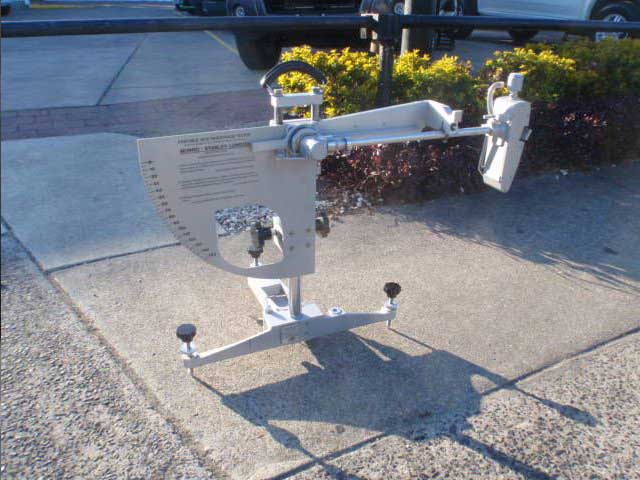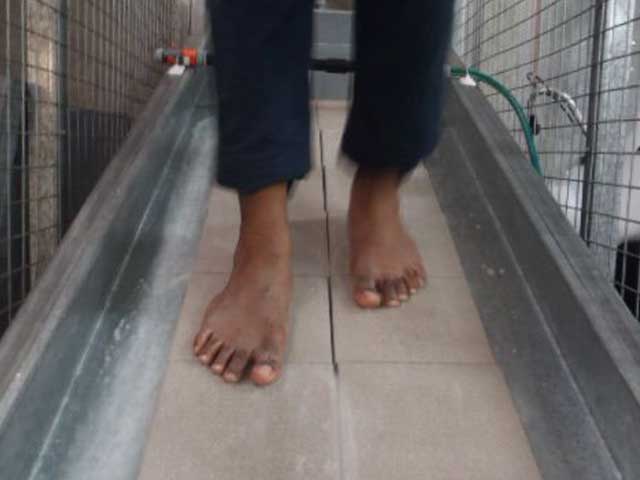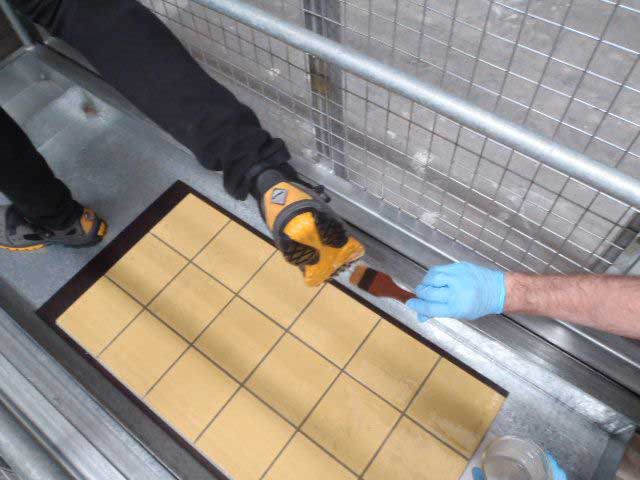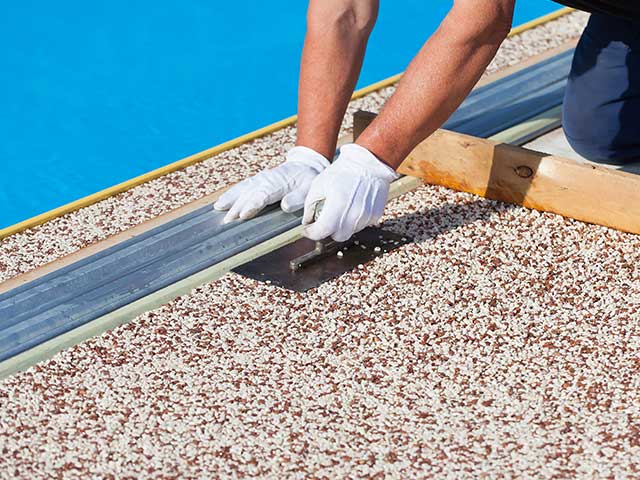AS 4586-2013 is the Australian Standard which provides slip resistance ratings for pedestrian floor surface materials. The information below outlines the slip ratings on each of the slip testing methods within the 2013 version of AS 4586.
Wet Pendulum Slip Ratings AS 4586 Appendix A
The wet pendulum slip test outlined in Appendix A of AS 4586 classifies the slip rating of surfaces that are prone to water contamination. The floor surface is tested using a Pendulum Friction Tester, where the individual measurements is the British Pendulum Number (BPN). The slip rating however is based on a minimum of five (5) specimens tested, in which the average of the BPN is used. The average of the five measurements in then described as a Slip Resistance Value (SRV), which is the method of classification for the pendulum slip ratings.
|
Wet Pendulum Slip Rating |
Wet Pendulum SRV Range |
|
|
Slider 55 |
Slider 96 |
|
|
P0 |
|
< 12 |
|
P1 |
< 20 |
12 → 24 |
|
P2 |
20 → 34 |
25 → 34 |
|
P3 |
35 → 39 |
35 → 44 |
|
P4 |
40 → 44 |
45 → 54 |
|
P5 |
> 44 |
> 54 |
The slip rating may also be considered a lower slip rating if one resulting specimen achieves a BPN less than the SRV minus 20 percent. For instance let’s say that the SRV was 50 with slider 96, this would at first glance achieve a P4 slip rating. However if one specimen in the sample lot achieved a BPN of 39, then the floor surface would be classified as P3. This is because 50 – (50 x 20%) = 40 and as one result was at 39, being less than 40, the lower slip rating is then applied.
If the lower slip rating is obtained, then the supplier of the product can either:
- Disregard the initial five (5) samples and then re-test using a new lot of ten (10) new specimens; or
- Divide the lot into lots of different smaller lots and then re-test to apply a slip rating to each of the smaller lots.
Dry Floor Friction Slip Ratings AS 4586 Appendix B
AS 4586-2013 Append B is the Dry Floor Friction Test (FFT) which provides the slip ratings of surfaces that are intended for mainly internal floors that are away from potential contaminants. This test is not suitable to assess the frictional characteristics in wet contaminated conditions. The average Coefficient of Friction which is obtained by the Tortus device or similar is applied to classify the slip rating:
|
Dry FFT Slip Rating |
Average Coefficient of Friction |
|
D0 |
0.40 or greater |
|
D1 |
Less than 0.40 |
In addition to the average result, the individual measurements of 100 mm intervals are assessed to determine the slip rating. If any of the individual measurements are less than 0.35, then the lot is then considered to achieve the D0 dry slip rating.
Wet Barefoot Inclining Platform / Ramp Slip Ratings AS 4586 Appendix C
The wet barefoot inclining ramp slip test provides the A, B & C slip ratings that are commonly used to specify the slip resistance of floor surfaces around swimming pools, communal changes rooms and the like. The premise of the test is to assess the frictional characteristics of wet water conditions and the slip potential of barefoot bathers.
|
Barefoot Ramp Inclining Platform Slip Rating |
Mean Angle |
|
No Classification |
Less than WB-A Surface (12 degrees) |
|
A |
Greater than or equal to WB-A Surface (12 degrees); & Less than WB-B Surface (18 degrees) |
|
B |
Greater than or equal to WB-B Surface (18 degrees); Less than WB-C Surface (24 degrees) |
|
C |
Greater than or equal to WB-C Surface (24 degrees) |
The slip rating obtained is essentially a comparison against a verification or calibration surface which has previously been verified at 12, 18 and 24 degrees to obtain the A, B or C barefoot slip resistance classification.
Oil Wet Inclining Platform / Ramp Slip Ratings AS 4586 Appendix D
The oil wet ramp slip test is performed in a similar way in which the barefoot ramp slip ratings are obtained, but in this test, oil is used instead of water and a specified safety shoe or boot is used. The most common slip rating that is specified is the R10 slip rating.
The test is first conducted by a number of calibration boards walked on to ensure that the person walking on the boards are walking within the normal limits of the test, being a biological control to the slip test. The ratings are then assessed to the table below.
|
Oil Wet Ramp Inclining Platform Slip Rating |
Corrected Ramp Angle |
|
No Classification |
Less than 6 degrees |
|
R9 |
Equal or greater than 6 degrees, but less than 10 degrees |
|
R10 |
Equal or greater 10 degrees, but less than 19 degrees |
|
R11 |
Equal or greater than 19 degrees, but less than 27 degrees |
|
R12 |
Equal or greater than 27 degrees, but less than 35 degrees |
|
R13 |
Equal or greater than 35 degrees |
For more information on slip resistance ratings, contact Safe Environments based in Sydney & Melbourne.
Be absolutely assured. Safe Environments is NATA accredited for Noise testing
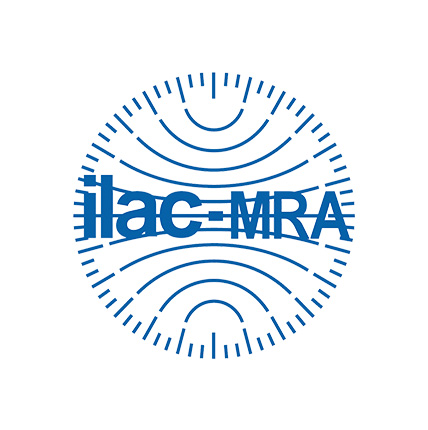
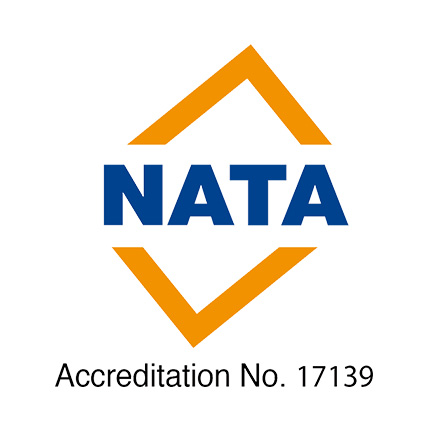
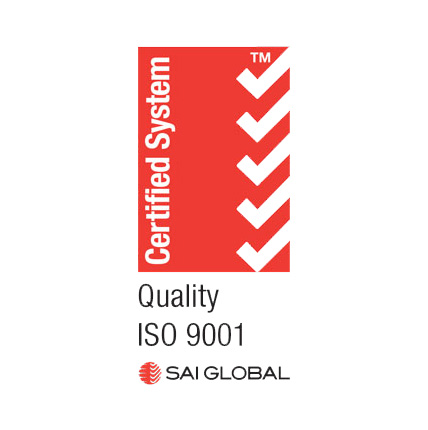
Ensure a Safe Environment
For more information on noise testing or management please contact one of Safe Environments Occupational Hygienists or Noise Consultants located in the following Australian cities:
Melbourne & Victoria
Unit 25, 1 Millers Rd Brooklyn VIC 3012 Australia
NSW - Sydney, Newcastle & Wollongong
Unit 4, 40 Bessemer Street, Blacktown NSW 2148
